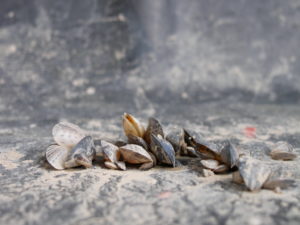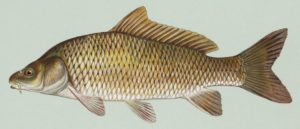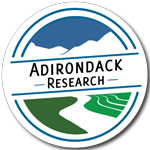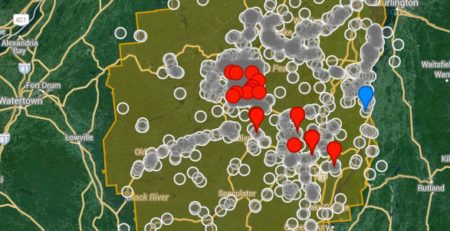The invaders of New York State
The invaders of New York State
Christopher Hart
Did you know New York has one of the highest densities of invasive species of any state in the United States? And, did you know that it may have some of the most fragile wilderness? The city is a major global trade hub, and much of the pristine wilderness upstate is a very susceptible target for the invasive species that result from the state’s bustling commerce. Luckily, New York State is doing something about it!
Fact: Invasive species are harmful to the natural environment, the native species within a native ecosystem, and, quite often, the human economy.
What is Adirondack Research doing about this problem?
Adirondack Research has been working with New York State Department of Environmental Conservation (NYSDEC) to assess the threats of invasive species in New York. We have been doing this using standardized assessment tools developed by NYSDEC’s Invasive Species Coordination Unit and statewide partners. Creating an assessment tool was the first important step in this process – it involved assigning numerical values to certain traits of invasiveness that any species may have.
Ever wonder what traits make a non-native species worthy of the title “Invasive”? The scoring takes important species attributes into consideration, like the effect a species has on an ecosystem, or the species’ dispersal capability and even climate similarities between its native range and our state. And lastly, we also take into consideration our ability as natural resource managers to control each species.
Assessing different invasive species focuses our management to those that cause the most harm.
While this approach is tedious and complicated, it is fairly straight forward procedure that allows scientists to score and rank each species. Once ranked, the NYSDEC can decide which species should receive the label “Invasive” and be regulated for commerce and transportation.
Which species pose the greatest threats?
Out of the 191 non-native animal species assessed for the NYSDEC, three of the most invasive are the emerald ash borer, the quagga mussel and the common carp. Below are descriptions of these species and brief explanations on why they are considered invasive.

The emerald ash borer is capable of highly efficient dispersal and quick destruction to Ash Trees and local forest habitats.
First up is the emerald ash borer. Coming in from Asia, it spread first to Michigan and Ontario, and then quickly throughout the Northeastern United States in the early 2000s. This pest’s most invasive quality is its quick and efficient dispersal ability. It doesn’t depend on human transportation, but can readily fly very long distances. The beetle’s larvae eat the inside of ash trees, killing the host within 2-4 years and changing the composition of the forest around it. These attributes were scored using our assessment tool, and the species received an overall invasiveness score of 96 out of 100.

Quagga mussels attach to the bottom of boats and spread throughout waterways. Remember to clean, drain and dry your boat after every use.
The quagga mussel is native to eastern Europe and has been brought over to North America by attaching to the bottom of boats. These mussels eat large quantities of tiny organisms called phytoplankton. Without a high population of phytoplankton, native organisms lose their source of food and die! Draining boats of water and cleaning them after any aquatic recreation is an easy way to prevent the spread of these mussels, but regardless, these mussels seem to cling on tightly and have spread throughout many waterways. This species scored a 88 out of 100 on our assessment.

The common carp is spread because of recreational fishing practices. It does significant damage to the local ecosystem.
The third and final invasive species included in this post comes as more of a surprise. The common carp, native to Eurasia, has a similarly devastating effect on ecosystems in which they invade. This fish feeds on phytoplankton and other species on the bottom of the food chain. Again, this completely alters the balance of the food web in favor of the carp, damaging the livelihood of the native species who depend on the food that the carp takes for itself. This species, however is only spread because of commercial and recreational fishing. It’s because of an intentional act that humans do to catch this species and release it somewhere else! This species scored a 90.43 out of 100 on our assessment.
So, how can this research be applied to management in the field?
These three species, among many others, threaten the foundations of our ecosystems. These non-native species have negative impacts on wilderness, society and our economy. Because they are such an overwhelmingly difficult problem to control, it’s necessary to prioritize the treatment some species over others. We simply don’t have enough time to get to everything! Using the assessment tool developed here at Adirondack Research, we can focus the treatment to species that will have the most devastating impact on the world around us.

